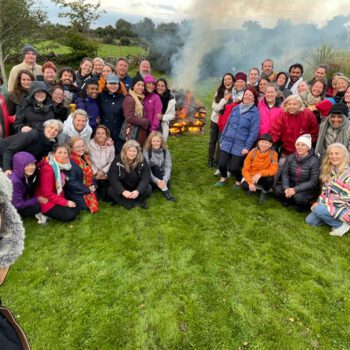By Luke Sniewski
Triggers. We all experience them. Like all other things the mind labels as “uncomfortable,” we generally view triggers as bad or as something to be avoided. In other words, when we are triggered the mind perceives that something is wrong. Triggers, however, can serve as catalysts for change that open the door to growth, healing, and transformation. As we develop our capacity to notice, feel, and relate to our triggers in more compassionate ways, triggers reveal themselves as the direct pathways to growth, healing, and authentic change.
The Real Message
Like many of my Compassionate Inquiry friends and colleagues, I’ve cycled through my fair share of laps around Michael Brown’s ‘Presence Process.’ He aptly conceptualizes the people and situations that trigger us as ‘messengers,’ not the real message. The trigger is the message. When we focus solely on the messenger, we miss the gifts that unpacking a trigger can bring.
When we are triggered, our body is alerting us that something significant is happening. A near-instantaneous cascade of physiological reactions flood our body so quickly that, if we’re not paying attention, they grab the steering wheel of our decision-making. Even when we are paying attention, the trigger can be so intense that even our best conscious efforts only pause or temporarily slow down a reaction, because they can seem hell-bent on finding a way to completion.
What the arising trigger is initiating is a deeply-embedded nervous system reaction that is fundamentally protective, defensive, and adaptive in nature. Our protectors – formed and forged in early childhood – are simply doing their job. The mind, unaware of this, mistakenly points the finger of blame outwardly, seeking to avoid its state of agitation and discomfort by tampering with external circumstances. If we are able to pause, soften, and stay with our trigger, we get the real message, which is the raw physiological content of what is behind the protection.
In other words, don’t be so quick to shoot the messenger. This is hard to do because the stories of the mind can be enticing and convincing. Like all things related to authentic and real change, it’s easier to think about it than actually do it. What’s required for turning our mental intentions into experiential wisdom is practice.

The Only Moment Change is Possible
We all want change. But thinking, planning and strategizing about change isn’t actually change. Real change only occurs when we find ourselves faced with the opportunity to choose something other than our conditioned reaction. It’s in that moment, where our body and its nervous system are pulling us in one direction (our pre-programmed and conditioned destiny) and, instead, we choose a response that is aligned with our authenticity and values, that the experience of change is accessed. Change, thus, is only possible when we are triggered. It’s not a small feat to choose the road less travelled.
Of course, this assumes that we have a choice in the matter. Whether we do or don’t have access to choice in the moment of a trigger is dependent on many variables; the most important being self-awareness. But even with self-awareness, what we realise quite quickly about responding to our triggers is that it’s hard to resist the physiological wave of an arising trigger. This is where practice can help.
If we practice noticing, being with, and embracing our experience through practices such as breathwork, meditation, yoga, and even cold exposure, we are practicing a different way of relating to our inner experience that we can lean on when triggers — a.k.a. Precious moments of change — arise. Just as talk therapy alone isn’t enough to fully process, integrate and heal from trauma, intellectual acceptance will never be enough to move beyond a trigger. Practice is needed.
Finally, it’s crucial to recognise that being triggered does not necessarily equate to being dysregulated. In fact, the experience of being triggered can coexist with a sense of safety. This is important both as a human being, as well as a professional helper. We can feel safe, even though our body is passing through an experience of discomfort. Arguably, therapists should be well-practiced in this necessary skill, as the ability to sit with our client’s pain is necessary for the deep work that we do. By acknowledging and understanding our triggers, without succumbing to overwhelming emotions, we gain the ability to navigate them skillfully, transforming moments of intensity into catalysts for positive change.
As we journey inward on the great adventure of self-discovery, triggers emerge as gifts and opportunities for growth, healing, and change. By shifting our perspective to view triggers as the real message; to embrace the discomfort they bring, we unlock the potential for profound transformation.



